讲座题目:Building a neighborhood local-scale policy analysis tool: Charlotte quality of life process
主讲人:Owen J. Furuseth教授
主持人:象伟宁教授
开始时间:2013年05月02日13:00
讲座地址:闵行校区资环与环境科学大楼一层148会议室
主办单位:资环学院、科技处
报告人简介:
Owen J. Furuseth, Ph.D.Associate Provost for Metropolitan Studies and Extended Academic Programs, andProfessor, Department of Geography and Earth Sciences, University of North Carolina at Charlotte
报告简介:
Over the past 20 years, the City of Charlotte, North Carolina and surrounding Mecklenburg County have experienced the fastest rate of growth in the city’s 200-year history. Since 2000, among all American metropolitan regions, Charlotte was the fastest growing metro, experiencing a 64.6 percent growth rate. Currently, Charlotte is the 17th largest city in the nation. But, urban growth has been uneven and increasingly concentrated on the outer edge of the city. The disparity has, in turn, created concerns among Charlotte’s leaders regarding the sustainability of inner-city neighborhoods. This led to an innovative strategy for monitoring and protecting local districts across the city.
Beginning in 1993, the Charlotte-Mecklenburg Planning Commission established a neighborhood-based analytical framework to collect and organize local data; carry out trend analyses; measure neighborhood change; and, most importantly, guide government urban policies. The Charlotte Neighborhood Quality of Life process (CNQoL) was initiated. The CNQoL study is a collaboration between local government units and the University of North Carolina at Charlotte. Carried out on a biennial schedule, the CNQoL is utilized by elected officials, public servants, citizen groups, and non-governmental organizations to inform local urban policies and community investments. The framework and language of the CNQoL are widely discussed and utilized by average citizens, news media, and community leaders.
The study process and its applications have been honored as “best practices” by the National League of Cities, Neighborhoods USA, Alliance for Innovation, and the Federal Reserve Bank of Richmond. The CNQoL process has served as a model for other North American cities, including Riverside, California, Chesapeake, Virginia, Durham, North Carolina, and Edmonton, Alberta, Canada.
This paper reviews and analyzes the CNQoL process. It lays out the chronology and key research decision-making that led to the choice of neighborhood boundaries and variables utilized in the analyses. The deployment of the research findings to inform public policy decisions is discussed. Data collection, research collaborations, and public dissemination of the CNQoL findings are fundamental criteria to the success of the process. Lessons learned over the past two decades are offered. Finally, 2012 enhancements to the Quality of Life process and framework are presented. The state-of-the-art Quality of Life dashboard product is shared.




